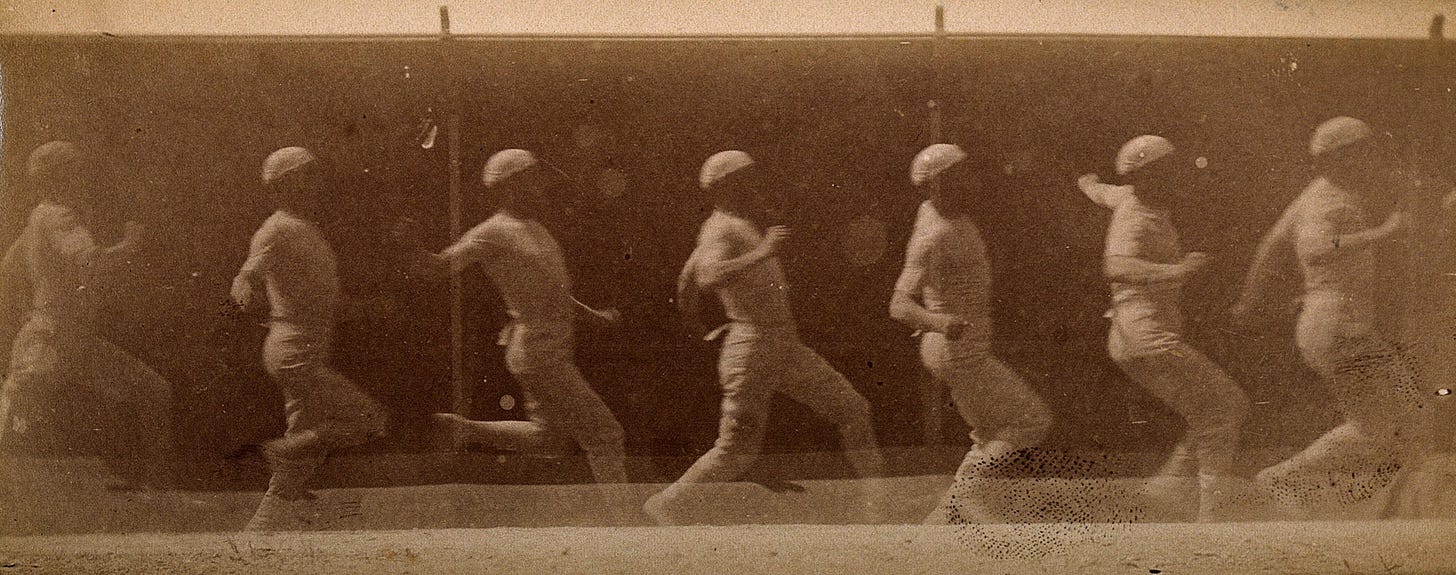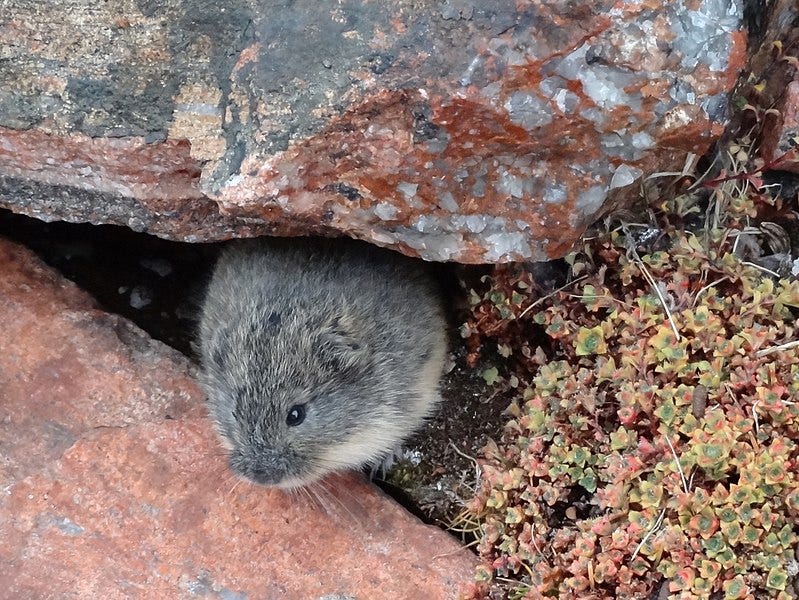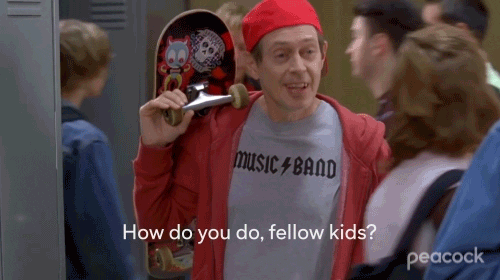#13 Don’t fall for the hype
Let's talk about the difference between relevant trends and hypes.

VR and AR? Blockchain and NFTs? Legs on the Metaverse? What, you’re not already excited?
This episode of Dig It! is all about why cultural heritage institutions are prone to fall for hypes without checking its real costs and effects for the organisation. And we dive deeper into how to differentiate between a relevant trend that might be worth experimenting with and a hype that could turn out to be a scam.
P.S. Oh and please: If there’s a tech bro or gal out there wanting to tell us why NFTs will transform GLAMs as we know it - feel free to head to the comment section, interaction is great for our stats.
P.P.S.: If you wonder if the combined crises of our times (looking at you, pandemic and climate crisis) have turned us to become a bit darker and bitter - that might just be the case.
P.P.P.S.: Thanks for waiting for us - it’s good to be back!
Let’s talk about… trends, hypes, and the real issues with how GLAMs treat them.
Larissa: Trends have much to do with how our globalized consumer culture works. Whether you look at the fashion industry (with some of the most sheining examples for increasingly rapid trend cycles and micro-trends) or at the tech sector: People often want to be among the first who have explored a trend, be among those who are known for diving right into it. Knowing about trends and being able to talk about their impact might seemingly confirm a person or organization’s skills and standing in their sectors. The issue for our little bubble starts with the fact that many GLAMs don’t actually have the resources or skills internally to critically evaluate and go further than trend reports.
Medhavi: Let us look at this from a visitor/audience point of view. I use a certain technology to access my favourite websites and newsletters, to pay for movie tickets or to shop and when that “trend” is missing at a museum, I feel distanced. By staying current with technologies that impact visitor/audience interaction and engagement with a collection, an institution not only stays relevant but also ensures a pleasant experience that could lead to a continuing association or recurring visits.
A tiny example: a common website trend is enabling your readers to switch between light and dark mode; yet most museum websites miss that component. When the larger public/audience has already adapted to a tech trend, wouldn’t it be pressing for a museum to keep up? I agree that GLAMs don’t have the resources to continually assess emerging trends - but that work can perhaps be a priority area for a new role, OR a very wild opportunity for the sector to create a collaborative “findings document” < starts a new card on Trello under the To-Do List >
A while ago, there was a discussion on how a cultural professional is well suited to work in any industry - so doesn’t the reverse hold true? When GLAMs don’t keep up with trends, don’t they also distance themselves from current patterns in recruitment and skills outside the sector that might be relevant?
Larissa: You are absolutely right, and I think that’s true for most industries where keeping up with developments and changes means to stay relevant in comparison to competitors. Of course, GLAMs should adapt and experiment as well with technology; they are allowed to fail or succeed (and both might be likewise valuable). We shouldn’t wait to adopt a tool until the audience gets estranged because the visitor experience feels like time travel. However, when GLAMs can’t even catch up with well established rules of digital accessibility and instead prioritise to throw money at tech gimmicks that might get them some attention - that’s what I perceive as dangerous. There simply is a major difference (and a wide span) between keeping up-to-date with functionally working technology and trying to be an early adopter - simply put: being able to differentiate between a relevant trend and a hype.
I kind of liked a blog entry written by Michael Björn from Ericsson about technology hypes (although I don’t quite agree with the conclusions he draws from his observations):
“It is easier to understand when you think of us humans as lemmings. All day long, we run in the same direction without much afterthought and when a new technology starts getting talked about by some influencers, often others start talking about it too. Before long, since everyone is talking about it, the idea somehow spreads that this amazing new technology will soon be upon us. After all, why else would everybody be talking about it?”
When we consider GLAMs being that kind of lemming organisations, seeing the large blockbuster institutions such as the Uffizi or the British Museum jumping onto the tech-trend train here and there makes sense. The issue is: They are no influencers who get paid to advertise new tech/fashion/make-up trends. They are - or should aspire to be - knowledge institutions who gamble with one of the most valuable resources GLAMs have: trustworthiness.
Many institutions fall for the easy solutions: They urgently want to seem up-to-date and “doing something with VR” or “mining some NFTs” seems like an easy fix where you just take the latest trend and adapt it to your own environment, trying to reach out to the communities behind it or make a bit of money with it. But if we neither possess the skills to evaluate a technology or test it accurately while being totally dependent on external consultants (who might have their own interests of selling that trend) - then we just should maybe be more cautious. Because you don’t even know which questions to ask to evaluate if that’s the right fit for your GLAM organisation at that point of time.
Medhavi: The key word here is “knowledge” - and what I feel curious about is whether the Uffizi/British Museum undertook any survey or study which informed the decision to take the NFT route.
As knowledge institutions, museums collect and preserve collections for future study and for future generations - it isn’t as if the future generations will only learn via VR. The question is, what are the emerging trends in digital learning / education / humanities that are here to stay and worth investing in?
A few questions to ask when you try to evaluate if a new trend is something to dig deeper into:
Is this tool likely to enhance our educational objective? Short-term or long-term?
If this breaks, physically or digitally, do we have a process at hand for fixing it? How often can we allow ourselves to repair it?
Are we okay with seeing this experiment fail? What are the risks attached? What can we learn from it?
Do we have enough skills internally to be able to manage it in the long run? Or do we have the means to rely on external support?
Will backing up this technology power our mission as an organisation?
Where does this fall in the urgent-important matrix ?
… What are your best tricks to see if a trend is worth to tap into?
Shout-out to:
Molly White! If you are actually interested in understanding Web3, blockchain, crypto and their ecosystem, please follow her on Twitter or consider becoming a patron of her newsletter Whitespace. To quote the Washington Post in an article about her:
“To White and her fellow critics, crypto company founders and the venture capitalists backing them are presiding over a massive, unregulated attempt to rid regular people of their money by exaggerating the potential of crypto technology. Years spent online researching esoteric Internet cultures have made White a rare figure who can maneuver the technically complex, meme-filled world of crypto, translating it into digestible prose.”
The written word
Larissa: One of the easier tech trends of the last decade has reached the GLAM sector already a couple of years ago: GIFs! Now, some see their journey and success story come to end:
“So could it really be the end for the ol’ GIF? GIFs are ‘cringe’ in part because they are too easy to make and find—they have been totally devalued by the public. And they are being replaced—Frazier noted that people communicate with other kinds of moving images now, such as TikTok clips with text over them and super-short Twitter videos that add humor by incorporating sound.” Kaitlyn Tiffany: The GIF Is on Its Deathbed, The Atlantic, October 2022
The article does not necessarily argue that moving images as a means of communication will disappear, but in specific that the file format GIF is more and more replaced by others. Simultaneously, TikTok and the like have impacted how younger generations communicate online and react without words. Kaitlyn Tiffany gives a good overview of how and why the file format flourished and why we might soon experience its decline (Hint: The company that now also features legs, Meta, is involved).
Start digging!
If you or your organisation have been wondering how to get involved with the Wikimedia movement or if you want to upload data to Wiki platforms such as Wikidata or Wikimedia Commons, the Content Partnership Hub might be just for you! They also have regular office hours every last Thursday each month at 15:00 UTC which might be a good place to start digging into GLAMWiki!
Favourite Discovery
“Why humans matter in the age of AI”: This Instagram filter, titled “Museum of the Future” (like countless conferences) uses the DALL-E’s outpainting feature to take you inside famous works of art.
Seeing the creation process (which isn’t very easy), one really does wonder if formats like GIFs will ever be redundant. ;)
And now for something completely different
Medhavi: Here’s “The Climate Game” developed by The Financial Times & Infosys - see whether you, as “Global Minister for Future Generations” can save the world from climate change.
Here's a hint: I failed because my decisions weren’t bold enough.
Become a part of Dig it!
Do want to become a part of the conversation? We’re looking for others to join us! Pitch us a topic that you’d like to discuss with us via newsletter.dig.it@gmail.com!
Thank you for reading our newsletter! We hope to spark some conversations and provoke some thoughts with Dig It!, so we’d really love to hear from you, on social media via #GLAMsDigIt or in the comment section. We’d be honoured if you’d recommend this newsletter
or share your thoughts with us!
All the best,
Upcoming
🗓 19 October: The Museum of Comfort Women opens in Berlin. The museum’s permanent exhibition seeks to raise awareness about sexual violence against women worldwide.
🗓 30 October: Deadline for applications for the Rebuilding to Last hackathon in Berlin. Cultural centers and organizations in Europe are invited to take part that “are based in (or willing to be based in) repurposed former industrial buildings, spaces or areas, who are looking to transform their organisations for a more sustainable future. Through the Hackathon event we hope to enable the selected participants to reflect on their projects as regenerating, rethinking, renovating and restructuring of cultural, community and social/physical spaces, in a lasting manner that is in balance with the ecosystem.”
🗓 9 November: Launch of Digital Benin on digitalbenin.org, a platform to “bring together photographs, oral histories, and rich documentation material from collections worldwide to provide a long-requested overview of the royal artworks looted in the 19th century.”




